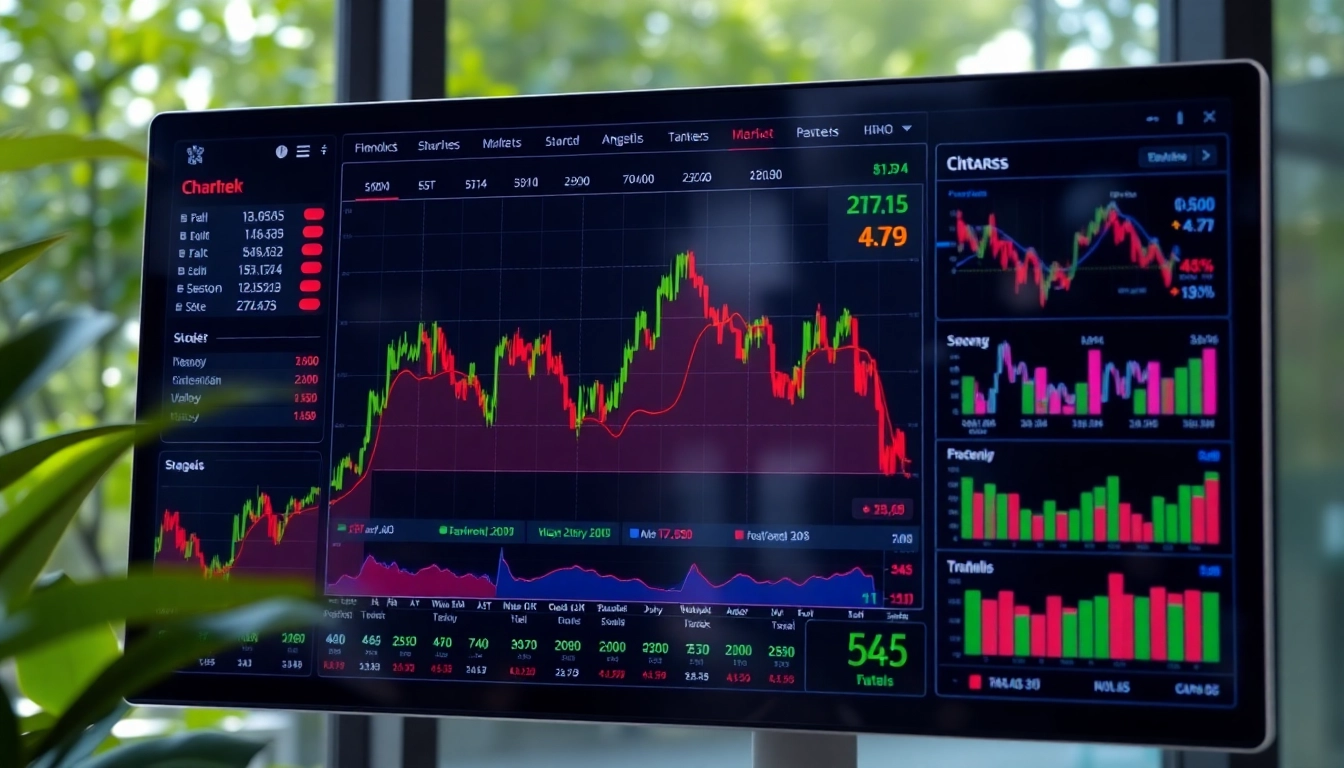Mastering Buying Commercial Property for Investment: Key Strategies for Profitable Growth
Investing in commercial property remains one of the most compelling avenues for building long-term wealth and generating passive income. In a UK market characterized by fluctuating mortgage rates, evolving regulations, and shifting market dynamics, understanding how to strategically acquire and manage commercial real estate is essential for maximizing profitability. This comprehensive guide explores the fundamentals of buying commercial property for investment, detailing critical steps from market analysis and financial planning to property selection and portfolio management.
If you’re considering entering this lucrative sector, it’s important to approach each investment with a clear understanding of market trends, legal requirements, and strategic financing options. For a deep dive into the intricacies of investment, visit Buying Commercial Property for Investment to explore tailored opportunities and expert insights tailored for UK investors.
Understanding the Fundamentals of Buying Commercial Property for Investment
What Defines Commercial Property Investment?
Commercial property investment involves acquiring real estate intended for business use, including offices, retail outlets, warehouses, industrial facilities, and mixed-use developments. Unlike residential investments, commercial properties are leased to tenants through long-term agreements, offering income stability and often higher yields. The primary motivation is capital appreciation, rental income, or a combination of both.
This type of investment requires a thorough understanding of the asset’s valuation, tenant creditworthiness, lease structures, and potential for appreciation based on market trends. The investment landscape is shaped by macroeconomic factors, regional development plans, and infrastructure projects that influence property values and rental demand over time.
Benefits of Investing in Commercial Real Estate
- Higher Income Streams: Commercial leases generally have higher rental yields compared to residential properties, often ranging between 6-12%, depending on location and property type.
- Longer Lease Periods: Longer tenant contracts (often 5-10 years) reduce vacancy rates and provide predictable cash flow.
- Diverse Portfolio Opportunities: Investors can diversify across sectors, including retail, office, industrial, and specialist assets like data centers or student housing.
- Inflation Hedge: Commercial leases frequently include rent escalation clauses tied to inflation, preserving purchasing power.
- Potential for Value-Add Investment: Strategic improvements and repositioning can significantly increase property value and rental income.
However, commercial investments also carry inherent risks, such as market volatility, lease renewal uncertainties, and economic downturn impacts. Careful due diligence and strategic planning are vital for success.
Assessing Market Trends and Opportunities
Analyzing Market Dynamics
The UK commercial real estate market is influenced by macroeconomic factors like interest rates, economic growth, and employment levels. Recent data indicates a resilient sector, with ongoing demand in logistics, warehousing, and niche sectors like student housing. Despite rising mortgage rates, investors remain optimistic due to the sector’s ability to adapt to changes, such as increasing e-commerce-related logistics facilities.
Current trends show a shift towards short-term leasing and flexible workspaces, which can offer higher returns but require active management. Additionally, location remains paramount; properties in prime urban centers like London, Manchester, and Birmingham tend to maintain value better due to robust economic fundamentals.
Spotting Opportunities
Emerging markets and underserved sectors present attractive investment opportunities. For example, the growth of sustainable and energy-efficient buildings aligns with government incentives and tenant preferences, potentially boosting long-term returns. Moreover, areas with upcoming infrastructure projects or regeneration initiatives provide strategic entry points for investors seeking capital appreciation.
Utilizing market research tools, consulting industry reports like those from RICS, and monitoring government policies are essential strategies to identify high-potential investment opportunities in a competitive landscape.
Preparation and Due Diligence for Purchasing Commercial Properties
Market Research and Location Analysis
Location is the cornerstone of successful commercial property investment. Factors such as accessibility, connectivity, catchment area demographics, and local economic activity influence demand and rental yields. Conduct on-the-ground surveys, analyze transportation links, and assess the area’s development plans to gauge future growth potential.
Use tools like UK Land Registry data and consultancy reports to understand historical price movements and forecast trends. Visiting sites and engaging with local business communities can offer insights that quantitative data may overlook.
Financial Planning and Budgeting
A comprehensive financial plan includes initial purchase costs, ongoing expenses, expected rental income, and potential appreciation. Stress-test your cash flow against various scenarios like rent decreases or vacancy spikes to ensure resilience.
Consider additional costs such as property management fees, insurance, maintenance, and regulatory compliance. Establishing a healthy contingency fund and understanding mortgage affordability are key steps before committing to a purchase.
Legal and Regulatory Considerations
Legal due diligence involves reviewing lease agreements, title deeds, planning permissions, and environmental assessments. Engage solicitors experienced in commercial real estate to navigate complex regulations and avoid costly pitfalls.
Furthermore, stay informed about government policies impacting commercial property—such as taxes, stamp duty, and incentives—to optimize your investment structure and ensure compliance.
Choosing the Right Commercial Property for Investment
Types of Commercial Properties and Their Pros & Cons
- Office Spaces: Stable demand, especially in prime locations, but susceptible to shifts toward remote working. Ideal for long-term tenants with corporate backing.
- Retail Units: Historically lucrative, but recent retail challenges due to e-commerce growth demand careful location and tenant selection.
- Industrial & Logistics: Growing sector driven by online shopping and supply chain needs. Typically offers higher yields but requires management oversight.
- Specialist Properties (e.g., Student Housing, Healthcare): Niche markets with predictable demand, often supported by policy incentives and demographic trends.
Each type presents unique risks and rewards; thus, aligning your investment goals with the property type is critical. For instance, if stable income is a priority, office or long-term industrial leases may suit your strategy.
Evaluating Property Potential and Growth Areas
Assess the potential for capital growth based on location, tenant profile, and local economic outlook. Look for properties in regeneration zones or areas with projected infrastructure improvements.
Data from reports such as RICS and planning authorities can reveal upcoming developments that could significantly increase property values and rental rates.
Working with Commercial Real Estate Experts
Partnering with established brokers, property managers, and legal advisors can provide a competitive edge. Experts understand local markets, tenant relations, and regulatory nuances, enabling you to make informed decisions and negotiate favorable terms.
Financing Options and Strategies for Buying Commercial Property
Traditional vs. Alternative Funding Sources
Conventional financing involves bank loans, typically requiring significant deposits and demonstrating strong creditworthiness. Interest rates fluctuate based on market conditions and borrower risk profile.
Alternative sources, such as private investors, crowdfunding, or vendor financing, can offer more flexible terms and speedier transactions. Emerging financing avenues include green bonds and government-backed schemes that reward sustainable development.
Optimizing Mortgage Rates and Terms
With mortgage rates in the UK experiencing fluctuations—like the decline to 4.28% on effective interest—negotiating favorable terms is vital. Locking in fixed rates can hedge against interest rate rises, while choosing flexible loan structures allows post-purchase adjustments.
Shop around and leverage brokers familiar with commercial mortgage markets to secure competitive rates and tailored repayment plans aligned with your investment horizon.
Tax Implications and Incentives
Understanding tax treatments such as Capital Allowances, VAT, and corporation tax is crucial. Tax-efficient structuring, possibly through limited companies or joint ventures, can enhance net returns. Recent discussions around property taxes suggest staying abreast of policy changes to minimize liabilities.
Furthermore, government incentives for sustainable development and energy efficiency can provide additional financial benefits.
Managing and Growing Your Commercial Property Investment Portfolio
Property Management Best Practices
Effective management maximizes income and preserves asset value. This involves proactive tenant screening, prompt maintenance, and regular rent reviews. Employing professional property managers can streamline operations and enhance tenant satisfaction.
Invest in modern amenities and energy-efficient systems to appeal to quality tenants and reduce operational costs, boosting profitability.
Maximizing Rental Income & Reducing Vacancy
Diversifying lease types—short-term, long-term, or flexible—can mitigate vacancy risks. Regular market rent assessments ensure competitiveness, while maintaining good tenant relations promotes renewals.
Implementing amenity upgrades and strategic marketing can attract high-quality tenants, improving occupancy rates.
Long-term Investment Strategies and Exit Planning
Build a diversified portfolio aligned with evolving market conditions and personal objectives. Use data-driven approaches to time exits—such as capitalizing on market peaks—and reinvest proceeds into higher-yield or emerging sectors.
Regular portfolio reviews and scenario planning facilitate adaptive strategies, ensuring sustained growth and financial security.














